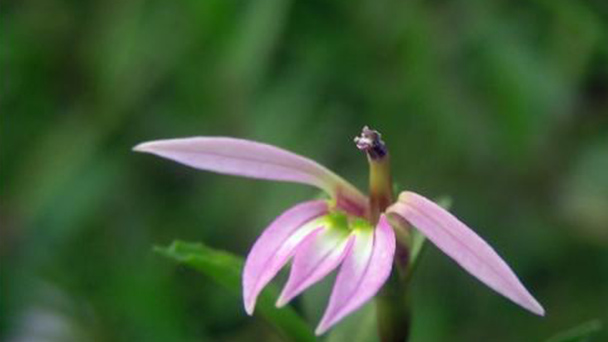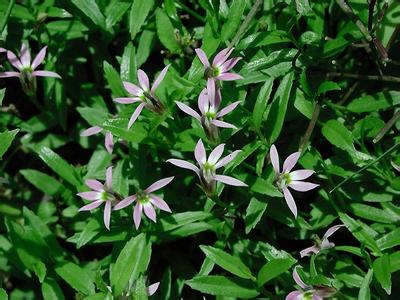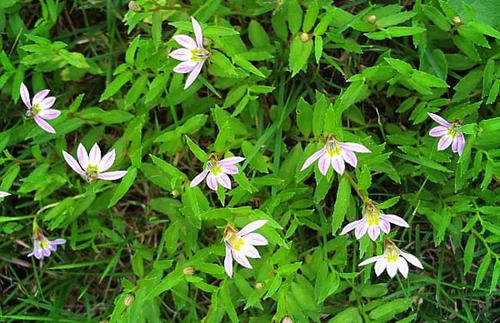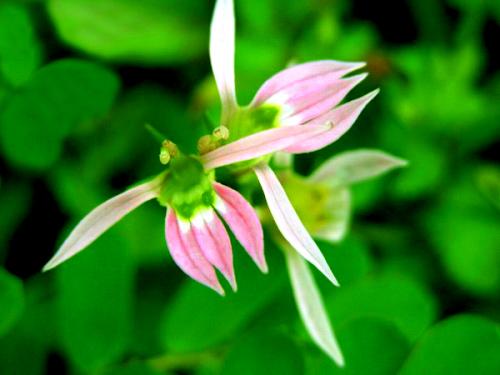Lobelia chinensis profile
Written by Maggie
Nov 23 2020

Lobelia chinensis is a perennial herbaceous plant, about 20cm tall, with a rounded stem. The whole plant is smooth and glabrous, prostrate, 5~15cm long. Leaves alternate sessile, narrow, entire or sparsely dentate, lanceolate or elongate. It is a famous herb in Chinese medicine field.
Lobelia chinensis picture

Morphological characteristics of Lobelia chinensis
Lobelia chinensis is a perennial herb, with white milk, stems slender, prostrate, rooting at nodes, branches erect, 6 -- 15 cm tall, glabrous. Leaves arevalternate, sessile or subsessile, elliptic-lanceolate to striate, apex acute, base rounded to broadly cuneate, entire or apex conspicuously serrate, glabrous. Flowers are usually 1-flowered, upper leaf axils branched. Pedicels slender, base with 2, 1 or no bracteoles ca. 1 mm long, bracteoles glabrous. Calyx tube is obliquely conical, base tapering but not distinct from pedicel, 3-5 mm long, glabrous, lobes lanceolate, ca. As long as a calyx tube, whole or lower with 1 pair of small teeth. Corolla is pink or white, 10-15 mm long, abaxially cleft to base, below larynx white pilose, lobes all spreading below, a plane, 2 lobes lanceolate, longer, middle 3 lobes elliptic-lanceolate, shorter. Stamens ca. is 8 mm, filaments connate above middle, filaments tube glabrous, filaments lateral to unconnect part pilose, anther tube ca. 2 mm, back glabrous or sparsely pilose. Capsule of cone-shaped, ca. 6 mm long. Seeds elliptic, slightly flattened, near fleshy. Flowering period is from May to October.
Lobelia chinensis growth habit
Lobelia chinensis prefers moist environment and is slightly tolerant to light humidity and drought and cold. It can overwinter naturally in the field and is wild in moist places beside ridge, meadow, ditch and stream. Soil with good drainage, fertile, loose leaf rot soil or peat soil is appropriate.
Lobelia chinensis distribution area
Lobelia chinensis is distributed in Jiangsu, Anhui, Zhejiang, Jiangxi, Fujian, Taiwan, Hubei, Hunan, Guangdong, Guangxi, Sichuan, Guizhou, Yunnan and other parts of East China, south China, southwest China and south China. Other Asian countries east of India also have it.
Propagation of Lobelia chinensis
Lobelia chinensis can be used for seed propagation, cuttage propagation and plant separation propagation. In order to expand the production, we can also use cuttings to propagate.

1. Individual plant propagation: after the new seedling of lobelia chinensis grows out in April and May in the spring, each cluster can be divided into 4-6 plants according to the size of the cluster. Then cut trenches and plant the plants 15-25cm apart and 6-10cm apart.
2. Cutting propagation: Cutting the stem and branches of Lobelia chinensis in the soil at a temperature of 24-30℃ and keeping the soil moist for about ten days, the seedlings will be transplanted to the field in the next spring, and managed in the field, with a seedling height of about 6 cm.
The principal use of Lobelia chinensis
Medicine: Lobelia chinensis whole plant can be used as medicine. It has the effects of anti swelling, detoxification, jaundice, edema, distention, diarrhea, snake wound, antiboil, boils, eczema, tinea, bruises, sprain, swelling and pain.

Latest Updated
- Benefits of Bugleweed - 7 Science-backed Health Benefits
- Bugleweed Dangers & Side Effects - Is It Poisonous?
- How to Plant Evergreen Trees - What You Should Know
- When to Plant Evergreens - Grow Guide for Evergreen Trees
- 12 Wonderful Evergreen Shrubs for Your Garden
- 12 Popular Evergreen Plants with Pictures for Beginners
- When And How To Prune A Lilac Bush Like a Pro
- How to Grow & Care for Lilac Vine (Hardenbergia Violacea)
- Japanese Lilac Tree (Syringa Reticulata) Care & Propagation Guide
- Shumard Oak Pros and Cons - What to Know
Popular Articles
- Winter maintenance of Antirrhinum Majus
- How to Grow Terminalia Mantaly Tree
- How to Grow and Care for Crossostephium Chinense
- How to grow Antirrhinum Majus in spring
- Peristeria Elata (Dove Orchid) Profile: Info & Care Guide
- Underwatered Snake Plant (Sansevieria Trifasciata) - Signs And How To Fix
- How to Care for Brazilian Jasmine Plant (Mandevilla Sanderi)
- How to Grow & Care for Graptopetalum Purple Delight in Summer
- Rosa Chinensis (China Rose): Plant Growing & Care Tips
- How to Care for Baby Sun Rose (Aptenia Cordifolia)